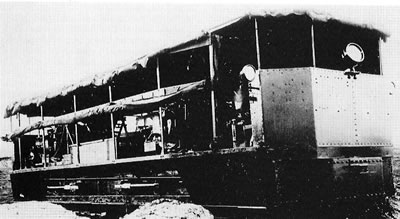Lieutenant Colonel Ernest Swinton suggested adding armor to an American Holt, a type of artillery tractor, in 1914 but his idea was initially rejected. However, a few months later, in February 1915, the Landship Committee was formed to analyze the possibilities available for manufacturing armored vehicles.
The Landship Committee was a collection of clever people enlisted from the ranks of military engineers, Army officers and the Royal Navy Air Service, who already had experience with armoring cars for use on airfields in Northern France. In fact the early amored vehicle designs were heavily influenced by naval ideas, treating them literally as the committee name suggest, Landships. This is very obvious in such machines as Thomas Hetherington’s land battleship, measuring over 100 feet (30 meters) in length and armed, like a battleship, with three twin-gunned turrets. Such machines seem ridiculous to us now, but at the time they were taken very seriously and the committee commissioned William Foster & Company to build machines based on Hetherington’s designs. This new machine was sort of a giant wheel powered by a Foster-Daimler artillery tractor, intended to crush barbed wire and various infantry obstacles. However, development never got very far as the committee son realized the machine was not practical.
A single machine that could lay a metal bridge across small gaps, the ‘Tritton Trench Crosser’, then cross over the gap and recover the bridge was made from an artillery tractor by William Tritton. This too was soon rejected after initial trials.
 One of the truly outstanding armored vehicles of the time, that really lived up to the name Landship, was a huge tracked vehicle put forward by the Pedrail Transport Company. This monster ran on two single-track units and was kitted out to carry a staggering fifty infantrymen. The company dithered somewhat in producing the Pedrail Landship and eventually only managed to present the committee with an unarmored version that was nowhere near tough enough for the trenches.
One of the truly outstanding armored vehicles of the time, that really lived up to the name Landship, was a huge tracked vehicle put forward by the Pedrail Transport Company. This monster ran on two single-track units and was kitted out to carry a staggering fifty infantrymen. The company dithered somewhat in producing the Pedrail Landship and eventually only managed to present the committee with an unarmored version that was nowhere near tough enough for the trenches.
Pedrail was the only British company making tracks but, though it was becoming clear tracks were the way to go, their track unites were not made well enough for the tasks needed of them.